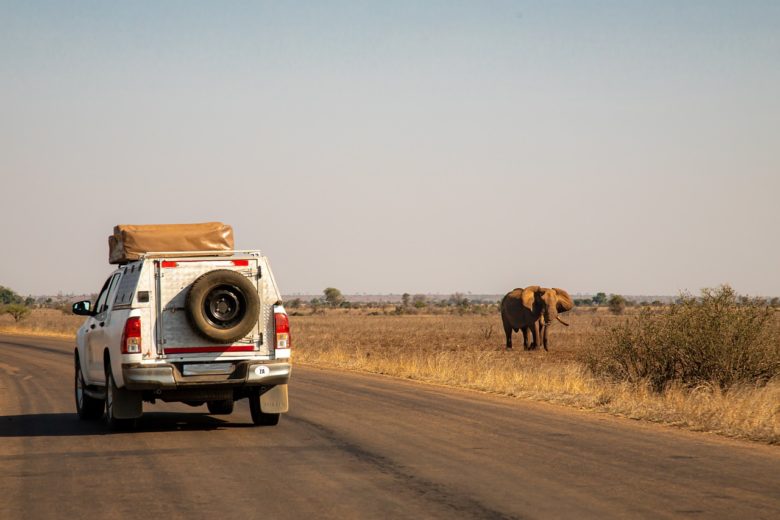
The Surprising Benefits of Wildlife Tourism
We are reader-supported. When you buy through links on our site, we may earn affiliate commission.
Wildlife tourism is a major business, accounting for 20% to 40% of the entire tourism industry’s net value. However, this kind of tourism can also have a detrimental impact on animal populations and their habitats. As people flock to take selfies with sedated tigers or ride abused elephants, they fuel the cycle of unsustainable ecotourism. Their actions further fund animal cruelty, captivity and destruction. Yet, many other wildlife tourist attractions actually work to protect animals and their habitats. In allowing tourists to come and experience these animals in their natural environments, these organizations change wildlife tourism — and the future of animals everywhere — for the better.
Educates Tourists
More than 31,000 species are facing extinction and, each day, between two and 20 species do cease to exist. However, many tourists — and people in general — aren’t aware of this rapid decline in biodiversity. This factor is mostly due to many of these species being halfway across the world. For people to know and care about these endangered animals, they must see and experience them and their homes. That’s where ecotourism comes into play. By traveling to and visiting animals’ natural habitats, tourists can increase their awareness of the importance of conservation and learn how they can make a difference. Moreover, they can go home and share their newfound knowledge and passion with others.
Spreads Awareness
Many people learn of ecotourism attractions through social media sites like Instagram and Facebook. Photos of friends posing with elephants and tigers make them want to go to those locations and do the same. However, these hands-on encounters often aren’t animal-friendly. Moreover, they only exacerbate the problem of wildlife cruelty and captivity. As more people travel in search of photo opportunities, they knowingly and unknowingly fund unsustainable wildlife tourism.
However, if more people travel and participate in healthy, animal-friendly ecotourism, these new photos will replace the ones featuring unsustainable attractions. This concept fosters true public awareness by showing a well-rounded perspective of issues surrounding wildlife and how people play a crucial role in preserving them.
Funds the Economy and Conservation Efforts
Wildlife tourism also encourages the development of impoverished communities by bringing steady revenue and jobs to the local economies. In Kenya, the Northern Rangelands Trust employs more than 1,000 Kenyans, providing them with security, healthcare and education. Moreover, the Trust gives them skills they can transfer to other areas of employment if they so choose. Thus, wildlife tourism offers many families a bright future they otherwise wouldn’t have had.
In addition to benefiting the people and the local economy, sustainable wildlife tourism also funds conservation efforts. At the Northern Rangelands Trust, almost 30% of their revenue comes from tourism. This funding helps them provide sanctuary for elephants, protect endangered species, monitor wildlife and boost local animal populations. This money also aids them in training and raising leaders within the community who will work to conserve local wildlife for many years beyond.
Promotes Local Animal Rescue Efforts
While many people may see photos of illegal poaching and become enraged, there’s little they can do to solve the issue from thousands of miles away, aside from sharing their sentiments with others. Those closest to the problem, like the locals in Kenya, can end illegal activities and rescue wildlife, though. And this is exactly what conservancies like the Northern Rangelands Trust are doing. Stopping poaching and the illegal wildlife trade requires more than law enforcement’s efforts. Kenya must rally the private sector to join the fight. Therefore, the Trust uses funding from tourism to educate people on poaching and how it affects the local community — because there can be no wildlife tourism or related jobs without animals. This initiative has encouraged the transport, travel and tourism sectors to work undercover to report illegal activities. Already there has been a 50% decrease in elephant poaching in Kenya.
Upholds Eco-Friendly Standards
If you choose a conservation-oriented wildlife tour, it’ll likely be eco-friendly to both the animals and the environment. Your journey may include participating in a walking tour instead of a car ride or taking care to observe the plants, trees and other flora while also looking for gorillas or other wild animals. Eco-friendly trips like these stress the importance of preserving animals’ homes and fostering a deep respect for natural habitats and ecosystems. Some travel companies, like Baobab Travel, are taking it a step further by offering fair-trade tourism travel packages. By purchasing one of these packages, tourists can rest assured that their money is benefiting the local people, environment and businesses of South Africa. Moreover, travelers can book vacations with organizations that work closely with local communities, thereby supporting the economy.
Protecting Wildlife Tourism With Your Dollars
Hundreds of thousands of unsustainable wildlife tourism attractions exist across the globe. These establishments practice animal cruelty, illegal wildlife trade and many other abhorrent activities. Whenever you visit one of these places to get a good photo or touch a wild animal, you fund this vicious cycle. However, by traveling and participating in tourist attractions that actively work to protect and care for animals and their habitats, you can be part of the solution. If enough people decide they no longer want to pay for an unsustainable experience, these harmful tours and attractions will cease to exist. And instead, people will participate in eco-friendly tours and pro-conservation activities, thereby protecting wildlife and their precious habitats.
Share on
Like what you read? Join other Environment.co readers!
Get the latest updates on our planet by subscribing to the Environment.co newsletter!
About the author

Jane Marsh
Starting from an early age, Jane Marsh loved all animals and became a budding environmentalist. Now, Jane works as the Editor-in-Chief of Environment.co where she covers topics related to climate policy, renewable energy, the food industry, and more.





